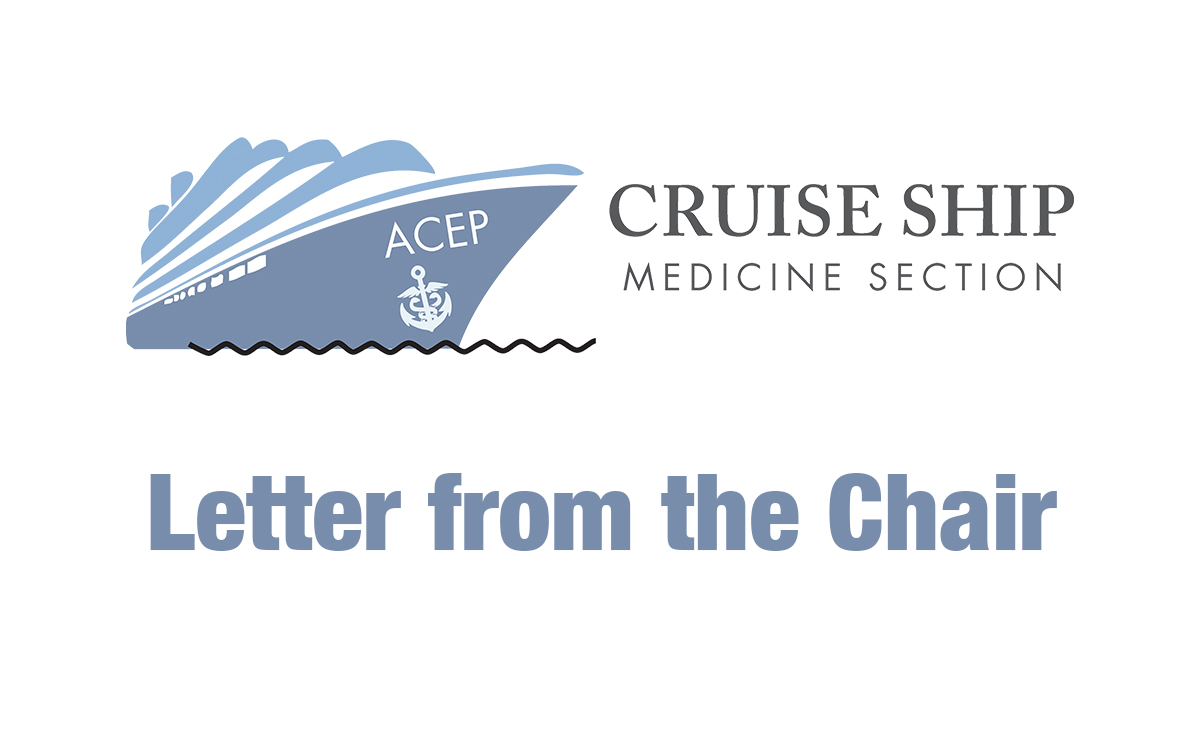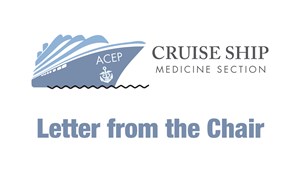
August 30, 2021
Ultrasound Onboard Cruise Ships
By Benjamin M Shore, DO, FACEP
Chair, Cruise Ship Medicine Section
In the two decades that I have served as chief medical consultant to two different cruise lines, I have urged a cautious approach to adopting ultrasound technology aboard the cruise ships in our industry. To be honest, I have essentially opposed its introduction and inclusion into our Cruise Ship Health Care Guidelines.
In the past, I had harbored three major concerns when considering implementation of ultrasound onboard our ships. Fortunately, I believe that all these concerns can now be overcome with careful planning and guidance from this Section.
First, there were the costs involved in providing our medical center staff members with these devices. For many smaller lines, the originally high price tag associated with ultrasound devices would have been prohibitive and could have posed a legitimate obstacle to their implementation.
Now, however, the ubiquity of ultrasound has resulted in a dramatic reduction in the cost of ultrasound devices. It is unlikely that any cruise company – no matter how small – would find current prices prohibitive, especially given their value in promptly identifying serious conditions amongst guests and crewmembers.
Second, unlike X-ray studies or electrocardiography, ultrasound is notoriously operator-dependent, and can cause misleading results if a patient is not properly scanned or if the images are subsequently misinterpreted.
But the same ubiquity that has driven down the cost of ultrasound devices over the years has also led to improved training opportunities. This generation of doctors is now being trained with significant exposure to ultrasound technique and interpretation, and ultrasound vendors have developed many high-quality online courses through which current practitioners can hone their technique in administering and interpreting ultrasound studies.
Finally, the penalty for false-negative interpretation of an ultrasound warrants caution. For instance, a missed appendicitis may progress to a perforation. A missed ectopic pregnancy can lead to a hemorrhagic rupture. And an early aortic aneurysm can develop into a catastrophic tear. Reliance on a false-negative ultrasound results might bolster a guest or crewmember’s reluctance to disembark while at port, resulting in a delay that later ends up a tragic outcome while far out at sea.
For all of these reasons, I was reluctant to endorse a recommendation for cruise ships to accommodate ultrasound technology. However, my concerns are now allayed. High-speed broadband internet is widely available. Training modules and the transmission of ultrasound images to shoreside consultants are no longer burdensome. And so, the risk of false-negative results is surely outweighed by the ability to have use of a superior onboard diagnostic tool.
Consequently, I now feel comfortable advocating for the inclusion and implementation of ultrasound technology industry-wide and encourage its implementation by including it as a recommendation within our ACEP Cruise Ship Health Care Guidelines.



